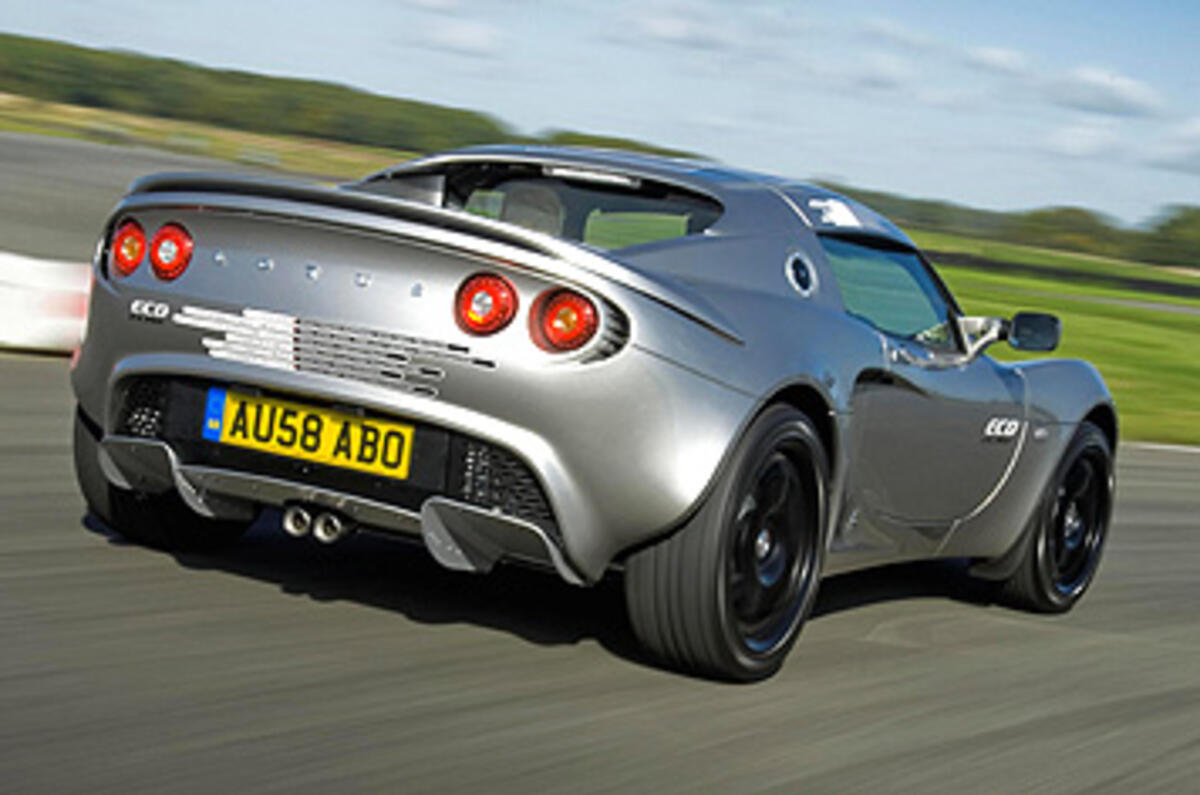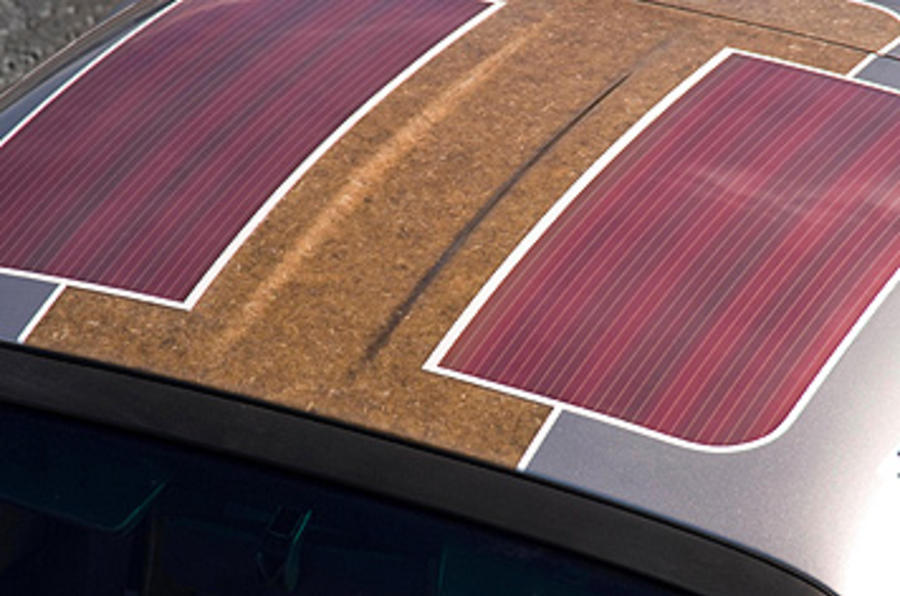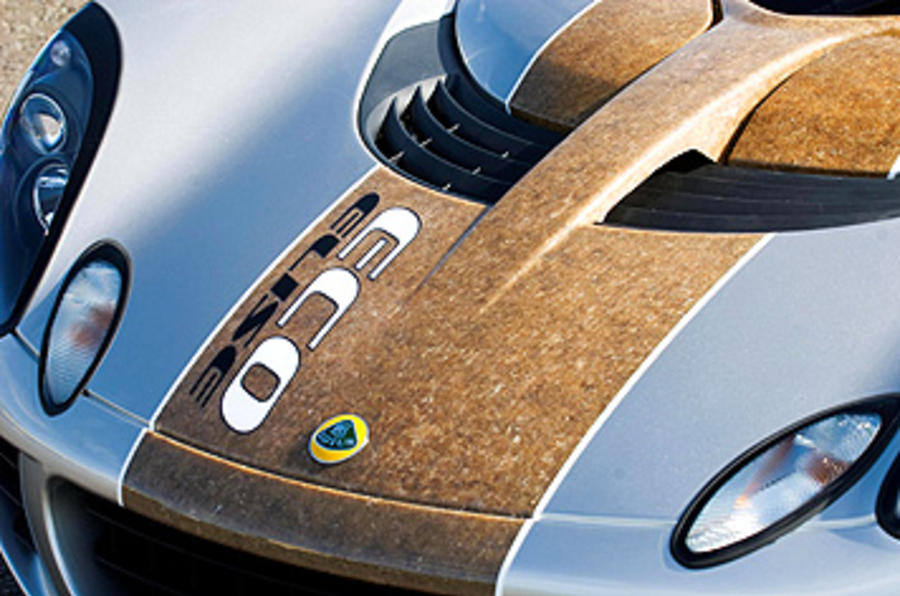What is it?
This is the Lotus Eco Elise. And this rather exuberantly stickered little Lotus could well be the future of sustainable, affordable, environmentally friendly performance motoring.
You see, rather than engineering a ridiculously expensive electric drivetrain of dubious practical value (see Tesla Roadster for details), or tweaking the drivetrain for maximum frugality (a la VW Polo BlueMotion), the chaps who have developed the Lotus Eco Elise have kept things relatively simple.
Instead of concentrating on one big idea, the guys at Hethel are saving the planet component by component. The result is that the myriad small differences between an Elise S and the Lotus Eco Elise should give the new car the carbon footprint of a small hamster.
There are lightweight alloys, which shave 15.8kg from the Eco Elise’s kerb weight, plus an Alpine stereo system that saves 1.5kg, and even slimline seats (made from hemp and now fully type approved) that save 500g apiece. The overall effect of these changes is to drop the Eco Elise’s kerb weight by 32kg.
Lotus has done more to the Eco Elise than just put it on a diet, however. As well as the seats, Lotus has manufactured the rear spoiler, front clamshell and even the roof from fully biodegradable hemp. The seats, steering wheel boss and door cards are also covered in dye-free fabric made from locally reared Norfolk sheep. And the paint is an oil-free water-based lacquer.
Lotus has even managed to attach a pair of solar panels to the roof, which run the stereo and air-con systems, meaning less work for the alternator and thus using less fuel.
The idea is to save the planet at the point of manufacture rather than the point of use, and to allow the owner simply to get on with the business of driving.
What’s it like?
From behind the wheel the Lotus Eco Elise is - very much as you’d expect - more or less identical to an ordinary Elise S. The only noticeable difference is three green lights where the change-up lights would ordinarily be – get all three lit and you are driving as economically as possible.
You get the same exquisite mid-engined balance and poise and the same delicate, perfectly judged steering. You also get the same revvy yet easy-to-drive 134bhp Toyota-sourced engine.
On the negative side, refinement levels are closer to Caterham than they are to Porsche Boxster, and the gearchange, although definitely more slick and positive than other Elises I’ve driven, is still a rather vague affair.
But these are relatively minor niggles. The Elise remains one of the finest, most involving driver’s cars on earth, and the Eco Elise does absolutely nothing to detract from that.
Should I buy one?
If only you could. For now, the Eco Elise is a test bed and not a series production model. But many of the Eco Elise’s tricks should start finding their way into production Lotuses, and the water-based paint should be available in 2009. If this is the future of performance cars, we like the way it’s going.















Join the debate
Add your comment
Re: Lotus Eco Elise
I had a Mk1 between 1997 and 2000, (loved it), and did find the brakes 'not quite there' for you on first application in heavy rain, but that isn't why they changed them. Their metal matrix composite construction was very expensive, so the replacement with conventional material was purely profit driven. It also increased (unsprung) weight, and contributed to the current state of affairs whereby the Elise now weighs about 170 kg more than it did 12 years ago.
I shouldn't complain though, as my own weight has increased in the last 12 years too.
Re: Lotus Eco Elise
Yup. I know about the alum / ceramic brakes. They sure didn't like water.
It's not that I found the Elise "raw," I've mostly owned roadsters and it was a good drive, just not well thought out.
As for the Evora, doesn't suit me as I like open cars.
Re: Lotus Eco Elise
Its great that a manufacturer is putting more emphasis on the car as a whole rather than just what comes out of the exhaust. I laugh at all of these hybrids, which are packed full of nasty batteries and fancy materials. I like the solar panel idea - hot sunny day, lots of power for the aircon, though I wonder how green the solar panels themselves are???